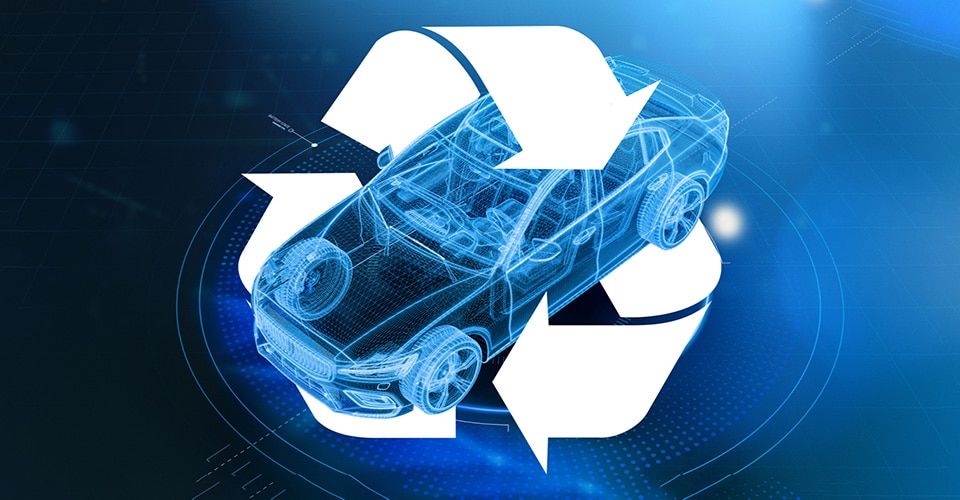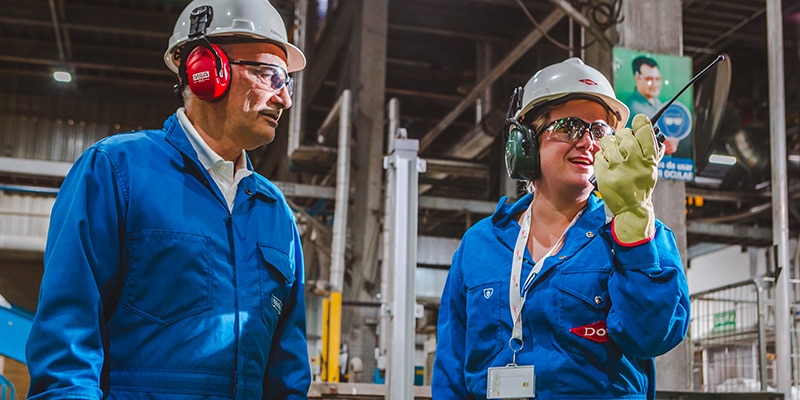
Circularity: the key to advancing low-carbon
mobility
“Recycling has become a crucial part of circularity, so it is important we do this efficiently with the lowest environmental impact. We need to ensure the fewest boundaries are put in place when designing a product for its first life. Especially for batteries, society must accommodate for this by removing some of the hurdles that are currently in place.”
– Kurt Vandeputte, Senior Vice President, Battery Recycling Solutions, Umicore, and Board Member and Treasurer, Global Battery Alliance
Electric vehicles (EVs) have emerged as a driving force behind reducing greenhouse gas emissions. But the industry-wide transition from to EVs is far more complex than simply perfecting a new type of car. For electrification to be a true enabler of sustainable mobility, we must address the current challenges at play - extending the life of existing vehicles while also enabling proper disassembly and recycling of its parts.
These challenges have served as the inspiration for the Sustainable Mobility Summit in Berlin, hosted by Dow ahead of the ABB FIA Formula E World Championship’s Berlin E-Prix. Designed to bring together partners and organizations spanning the mobility value chain, the Summit sparked further dialogue on the significance of accelerating circularity strategies that ensure additional positive impact within the automotive industry, ultimately contributing to low-carbon mobility.
Above and Beyond Electric Vehicle: Extending
EV Battery Lifespan
While electrification is one essential step in the world’s transition to net-zero to mitigate climate change, EV manufacturing is intrinsically a resource-dependent process. Rare-earth magnets and raw materials like lithium, cobalt and graphite, essential for EV batteries, have a significant contribution to the impact of EVs throughout their life cycle.
One solution is to extend the usable life of existing parts, specifically enabling a second and third life in applications in and beyond mobility. Encouraging proper EV usage through consumer education, which includes charging ‘etiquette’, optimizing driving habits and regular maintenance, can all make a substantial difference. Furthermore, there is the power and potential of materials science. Our MobilityScience™ engineers are developing technologies that enhance the durability and longevity of car components.
The cost of extending the lifetime of EVs, however, must be balanced with the environmental gains of creating new, more efficient EVs. This is where prioritizing circularity in the design phase comes into play.
Enabling Recycling and Reuse of EV Batteries
Enabling recyclability is a crucial strategy to offset the initial environmental impact of material sourcing and manufacturing as well as reducing waste. Today, there are numerous EV components that hold significant potential for recycling and reuse.
Currently, a paradox exists where optimizing components for efficiency during their first place often hinders circularity at the end of life. Tearing down siloes and sharing best practices between companies across the value chain are critical to putting this paradox in the rearview mirror.
For example, Dow is working with partners to pioneer the use of circular materials in automotive solutions. One example is in the collaboration with automotive tiers Autoneum and Adient, where we created circular polyurethane solutions produced using a mass balance approach. Together, we were able to replace fossil carbon feedstock with virgin-type-quality materials that meet the same performance requirements while being sourced from a waste product of the mobility sector.
Looking at the EV battery, its early-stage design has a crucial role to play in enabling circularity. At Umicore, we have found that a modular battery is key in ensuring proper disassembly and parts recycling can take place at vehicle end-of-life. To accommodate this approach, disassembly must be thoughtfully planned for during design, which requires clear pathways to education and shared learnings between materials science companies like Dow, tier suppliers, OEMs, design companies, and regulatory bodies.
Working with regulators to adapt policy frameworks to accommodate these new design approaches is essential. The latest revision proposed to the End-of-Life Vehicles (ELV) Directive of the European Commission1, for instance, will help promote the use of recycled materials in original vehicle designs, improve the traceability of ELVs to ensure proper recycling, and increase provisions to prepare materials for recycling. Improving existing policies and addressing obstacles within them is crucial to align societal goals with the economic viability of circular models. Achieving a global, unified policy environment for EV circularity in the coming years would be a significant step in the right direction.
As said: circular models represent our pathway to low-carbon mobility. Prioritizing circularity will help the industry be at the forefront of the crucial sustainability track of the EV movement, accelerating the reduction of environmental impact beyond tailpipe emissions.
Kurt Vandeputte, Umicore
Esther Quintanilla, Dow
1 https://environment.ec.europa.eu/topics/waste-and-recycling/end-life-vehicles_en





